Cigar Spirits: The Macallan Cask Strength and Aberlour A’Bunadh Single Malt Scotch Whiskies
25 Oct 2017
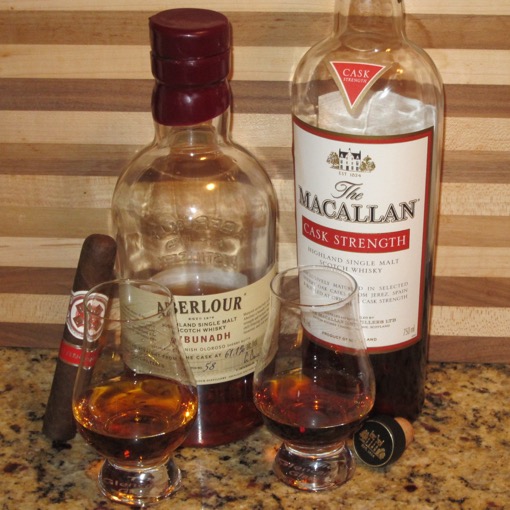
One of the best things about single malt scotch is the variety in choice. Unlike straight bourbon or rye, the legal definition of single malt lends itself to starkly contrasting styles.
Sing malt can be peated or un-peated; aged in first fill, refill barrels, or a combination of each; and can use different barrel types (sherry, bourbon, port, etc.) for all or some of the aging. In addition, region, water source, and age can help make each whisky distinctive.
Personally, I tend towards the extremes of single malt styles. On one end are heavily peated styles (Ardbeg, Laphroaig, Lagavulin). On the other are sherry bombs (The Macallan and GlenDronach).
Within the heavily sherried style is the sub-category of cask strength whiskies. Today I look at two such single malts:
The Macallan Cask Strength
Macallan is the quintessential sherried single malt, and the Cask Strength offering shows off its mastery of the style. This particular bottle is 59% ABV and is a remarkably dark crimson color.
The nose features rich dried fruit, dates, and toffee. The flavors are intense with more dried fruit (raisins, dates, maraschino cherries), ginger, pralines, nutmeg, graphite, and chocolate. The finish lingers with oranges, more red fruit, baking spices, and brown sugar.
Macallan’s Cask Strength is a hedonistically rich single malt. Despite the high proof, it is easily enjoyed neat, though you should also try it with a drop or two of water.
Now for the bad news. While it once could be found for $99, this whiskey was discontinued a few years ago and has become nearly impossible to find. Macallan introduced a Classic Cut Limited Edition this year that uses a similar label and is high proof and aged in “oak casks seasoned with Oloroso sherry,” but reviews suggest it isn’t as intensely sherried as the discontinued Cask Strength.
Aberlour A’Bunadh
Aberlour uses sherry cask aged whisky in combination with bourbon casks in most of its offerings, but A’Bunadh (Scottish Gaelic for “of the origin”) is exclusively sherried whisky bottled at cask strength, in a style the distillery says it made a century ago. Each batch (I’ve tried multiple batches, but today I’m tasting Batch 58) is a blend of whiskies aged in first filled sherry casks of various ages.
Bottled at 61.1% ABV, Aberlour A’Bunadh Batch 58 is a light mahogany color. The nose features black cherry, apricot, and coffee grounds. The palate has some tannic notes with walnut, cinnamon, orange zest, nougat, and brown sugar. The finish is long with butterscotch, baking spices, and oak.
Unlike Macallan Cask Strength, Aberlour A’Bunadh isn’t difficult to find. And while prices can vary wildly, you can usually find it for around $80. It lacks the sherried intensity of the bold Macallan, but it is still a tasty, rich, lush, dram that’s brown sugar- and fruit-forward.
Cask strength sherried single malt pushes the style to its limit in a way that can be divisive. If you like sherry-forward whisky at a more traditional proof, you owe it to yourself to try Aberlour A’Bunadh and, if you can find it, Macallan Cask Strength. Other whiskies in the style include Highland Dark Origins, Glenlivet Oloroso Nadurra, and GlenDronach Cask Strength. For me, they represent the perfect after-dinner scotch whisky, cutting through a heavy meal and pairing perfectly with a medium- to full-bodied cigar.
–Patrick S
photo credit: Stogie Guys

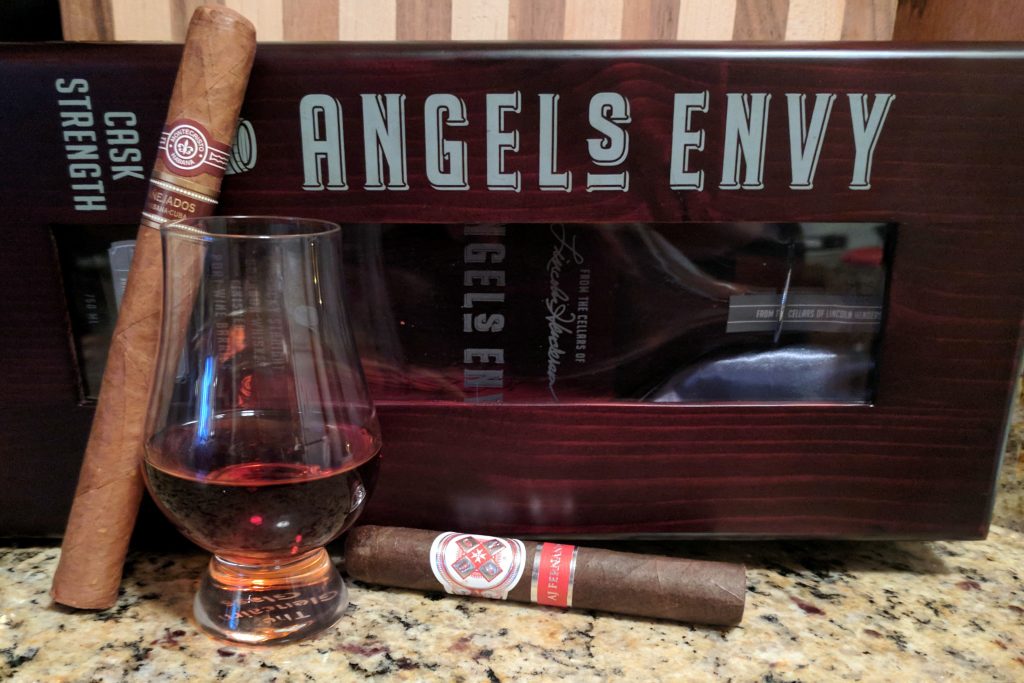
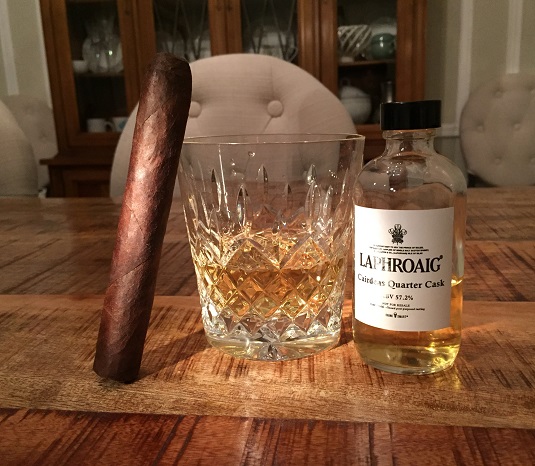
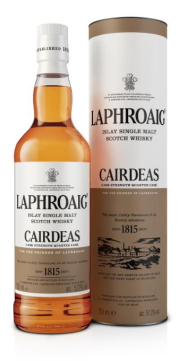 There’s certainly nothing wrong with scotch in the summer, though, especially when there’s a new release to try that stirs my interest. Case in point: the new Cairdeas Quarter Cask from Laphroaig. Cairdeas (“friendship†in Gaelic) is, according to Laphroaig, a response to market demand for “a cask-strength version of the popular Laphroaig Quarter Cask expression, which offers an irresistible doubling of flavor, due to the double maturation in two American oak barrels.â€
There’s certainly nothing wrong with scotch in the summer, though, especially when there’s a new release to try that stirs my interest. Case in point: the new Cairdeas Quarter Cask from Laphroaig. Cairdeas (“friendship†in Gaelic) is, according to Laphroaig, a response to market demand for “a cask-strength version of the popular Laphroaig Quarter Cask expression, which offers an irresistible doubling of flavor, due to the double maturation in two American oak barrels.â€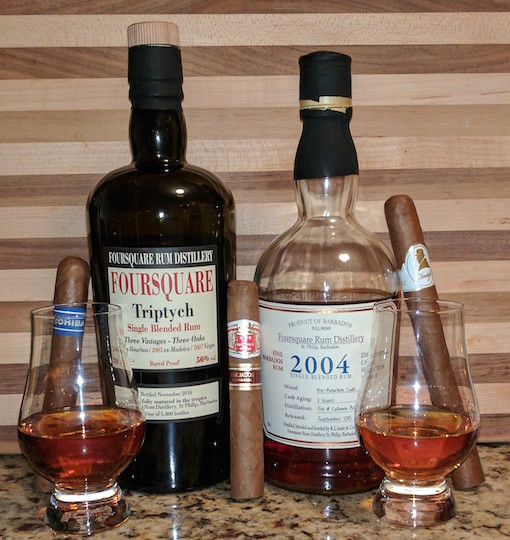
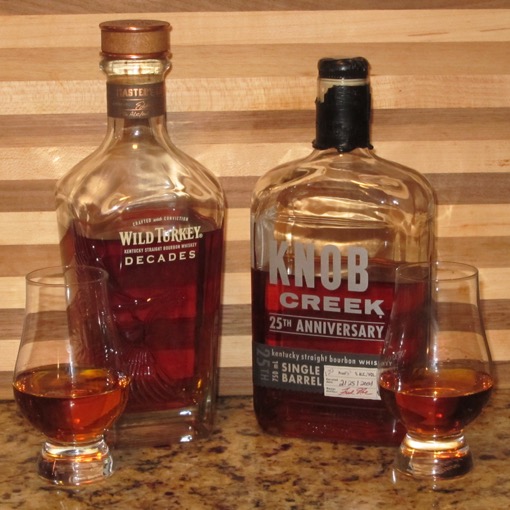
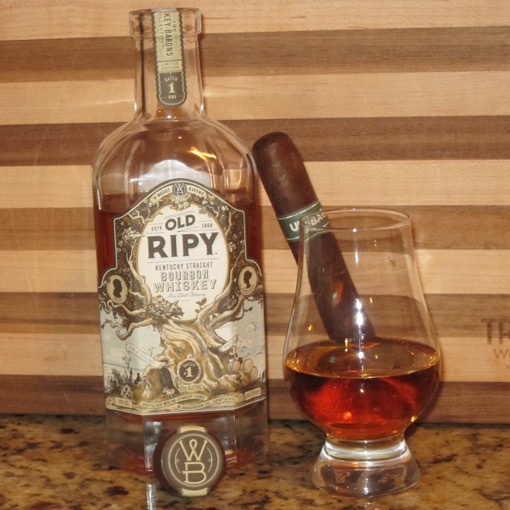
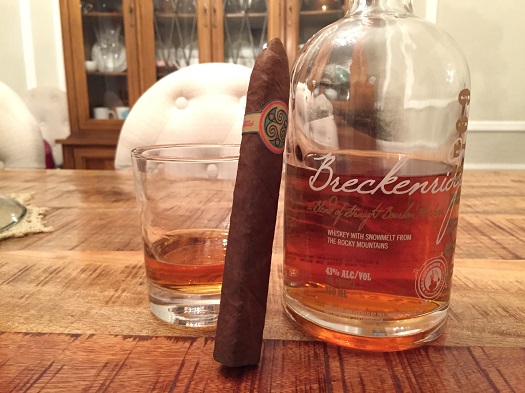
 Patrick Ashby
Co-Founder & Editor in Chief
Patrick Ashby
Co-Founder & Editor in Chief Patrick Semmens
Co-Founder & Publisher
Patrick Semmens
Co-Founder & Publisher George Edmonson
Tampa Bureau Chief
George Edmonson
Tampa Bureau Chief